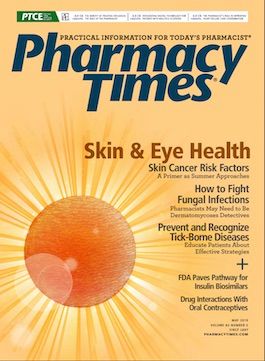Publication
Article
Pharmacy Times
FDA Paves Pathway for Insulin Biosimilars
Author(s):
The Agency Sees Potential in Generic Competition to Reduce Drug Costs for Patients With Diabetes
To effectively meet the needs of patients with diabetes, the FDA is taking steps to promote generic drug competition among insulin therapies to reduce costs, according to a recent statement from the agency.
Nearly 30 million Americans are affected by diabetes and its associated risks, including blindness, heart disease, and organ failure. Access to insulin plays a vital role in managing health for patients with diabetes, and a lack of access can quickly prove fatal. The disease is the seventh-leading cause of death and costs $330 billion in health care spending annually, placing both financial and physical burdens on patients.
FDA officials noted that although any competition can help drive down prices, the presence of 3 or more generic competitors in the market results in a more significant decrease. A pathway for generic drug competition is critical to improving drug access and the quality of public health, according to an FDA statement.
Agency officials said that competition is necessary among biologic medicines, which are often more complex to manufacture. Biologic therapies are molecules produced from living cells that have been the foundation of advancing modern medicine, according to the FDA. Previously, biologics lacked competition because of the absence of abbreviated pathways for marketing follow-on versions under the Public Health Service (PHS) Act.
In 2010, Congress gave the FDA permission to implement a pathway for biosimilar approval in an effort to increase access, lower health care costs, and provide more treatment options, according to the statement.
Recently, the FDA has been expanding policies to promote more competition among not only generic drugs but also biosimilars. Increasing efforts to promote biosimilar competition can provide better access to medication and help the FDA ease the process of biosimilar product development and approval. Its efforts include steps toward implementing Congress’ direction, which involves transitioning approved biologics as drugs under the Federal Food, Drug, and Cosmetic (FD&C) Act and licensing them as biologics under the PHS Act. This would subject approved biologics to biosimilar competition, as the PHS Act governs FDA approval of most biologics, according to the agency.
This transition would be crucial in promoting competition among insulin manufacturers and providing better access to patients with diabetes. Historically, insulin has been regulated under the FD&C Act rather than the PHS Act. Biologics are also complicated to produce, as they are manufactured through advanced biotechnological methods that isolate molecules from animals, humans, or microorganisms.
These complexities have made bringing a generic insulin to the market under the FD&C Act extremely difficult, according to the statement.
The FDA believes that the transition from the drug to the biologic pathway will spark action in the biosimilar market, as it has already seen interest from sponsors who wish to develop biosimilar copies of insulin. The agency also thinks that proving that a biosimilar is interchangeable with insulin will be less challenging than proving generic equivalence.
FDA officials recognize that this is a relatively new concept in producing drugs and that certain challenges may arise in producing biosimilar copies of insulin. The agency has announced a public hearing to discuss potential challenges in developing these biosimilars and access to affordable insulin products as a whole. The FDA noted that the hearing will also help it move forward with creating policies to advance insulin access.
Reference
Statement from FDA Commissioner Scott Gottlieb, MD, on the agency’s continued efforts to bring competition to insulin market to lower prices and expand access [news release]. Silver Spring, MD: FDA; April 2, 2019. www.fda.gov/NewsEvents/ Newsroom/PressAnnouncements/ucm634999.htm. Accessed April 14, 2019.







